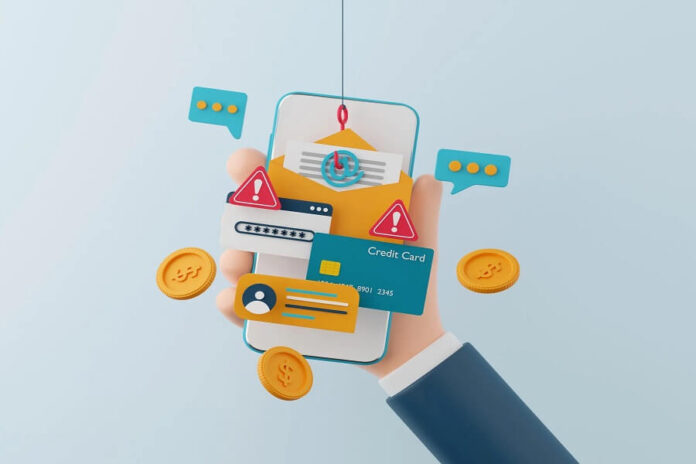In today’s digital age, where technology plays a significant role in our lives, social engineering has become a prevalent and sophisticated threat. Social engineering involves manipulating individuals into divulging sensitive information or taking specific actions that could harm them or their organizations. In this article, we will explore various practical strategies and tips to protect yourself from social engineering attacks.
What is Social Engineering?
Social engineering is a form of cyber-attack that relies on psychological manipulation rather than technical exploits. Attackers use various deceptive tactics to exploit human vulnerabilities, such as trust, fear, or curiosity, to gain unauthorized access to personal information, financial data, or sensitive corporate data.
Types of Social Engineering Attacks
- Phishing: The most common form of social engineering, where attackers use fake emails, websites, or messages to trick individuals into revealing their login credentials or financial information.
- Pretexting: Involves creating a fabricated scenario to obtain personal information from the victim, often through impersonation.
- Baiting: Attackers offer something enticing, like free software or downloads, which contains malicious elements that can compromise the victim’s system.
- Quid Pro Quo: Attackers promise something in return for specific actions, like technical support assistance, but use it to gain unauthorized access.
- Tailgating: This involves physically following an authorized person into a restricted area to gain access.
Protecting Yourself from Social Engineering Attacks
1. Educate Yourself
Educate yourself and others about the different types of social engineering attacks, their characteristics, and the potential consequences. Stay updated on the latest social engineering trends and tactics.
2. Enable Two-Factor Authentication (2FA)
Implementing 2FA adds an extra layer of security by requiring a secondary verification method, such as a code sent to your phone, when logging in.
3. Think Before You Click
Avoid clicking on suspicious links, especially those received via email, messages, or unknown websites. Hover over links to see the actual URL before clicking.
4. Verify Requests:
Before providing any personal or sensitive information, verify the identity of the person or organization requesting it. Use official contact information and channels.
5. Create Strong Passwords
Create strong and unique passwords for each online account. Use a combination of upper and lower case letters, numbers, and symbols. Consider using a password manager for added security.
6. Enable Multi-Factor Authentication (MFA)
MFA adds an extra layer of security by requiring multiple forms of identification, such as a password and a fingerprint or a one-time code sent to your mobile device.
7. Limit Personal Information Sharing
Be cautious about the information you share on social media platforms. Avoid disclosing sensitive details like birthdates, addresses, or financial information.
8. Be Wary of Unsolicited Messages
Don’t click on links or open attachments in emails or messages from unknown sources.
9. Regularly Update Software
Keep your operating system, antivirus, and other software up to date to ensure protection against known vulnerabilities.
10. Encrypt Sensitive Data
Encrypt sensitive files and data to prevent unauthorized access even if someone gains physical access to your device.
11. Report Suspicious Activity
If you encounter any suspicious activity or believe you are being targeted by a social engineering attack, report it to your organization’s IT security team or relevant authorities.
Safeguarding Against Social Engineering Over the Phone
Social engineering attacks can extend to phone calls as well. Protect yourself with these precautions:
- Caller ID Verification: Always verify the caller’s identity before providing any information.
- Refuse Unsolicited Calls: If someone asks for personal information unexpectedly, decline politely and end the call.
- Don’t Share Sensitive Information: Never share passwords, credit card details, or other sensitive data over the phone unless you initiated the call.
Identifying Social Engineering in Social Media
Social media platforms are fertile grounds for social engineering. Follow these guidelines to avoid falling victim:
- Privacy Settings: Utilize strong privacy settings to control who can view your posts and personal information.
- Be Cautious with Friend Requests: Only accept friend requests from people you know personally.
- Beware of Scammers: Be wary of messages from unknown individuals claiming to be in distress or asking for financial assistance.
- Think Before You Share: Refrain from posting personal details like your address, phone number, or travel plans publicly.
Protecting Against Physical Social Engineering
Physical social engineering can occur in various environments. Stay vigilant with these measures:
- Secure Your Belongings: Keep important documents and electronic devices secure, especially in public places.
- Avoid Leaving Traces: Dispose of sensitive documents properly and avoid leaving them unattended in public areas.
- Challenge Unknown Individuals: In secure environments, politely ask unknown individuals about their purpose to ensure they have legitimate reasons to be there.
Recognizing Social Engineering at the Workplace
Social engineering attacks can target employees within an organization. Foster a culture of cybersecurity with these strategies:
- Employee Training: Provide regular training to employees about the latest social engineering tactics and how to respond to suspicious situations.
- Strict Access Control: Implement access control mechanisms to limit employees’ access to sensitive information based on their job roles.
- Encourage Reporting: Create an environment where employees feel comfortable reporting potential social engineering incidents without fear of reprisal.
Responding to a Social Engineering Attack
Even with preventive measures, social engineering attacks may still occur. Knowing how to respond is essential:
- Stay Calm: Don’t panic. Take a moment to gather your thoughts and focus on what needs to be done.
- Report the Incident: Notify your organization’s IT security team or supervisor about the incident immediately.
- Contain the Damage: If you suspect any unauthorized access, take steps to limit the attacker’s reach.
- Update Security Measures: Learn from the incident and enhance your security protocols to prevent future occurrences.
FAQs
What should I do if I suspect a social engineering attack?
If you suspect a social engineering attack, do not engage with the attacker. Report the incident immediately to your organization’s IT department or the appropriate authorities.
Can social engineering attacks only happen online?
No, social engineering attacks can also occur in person, such as tailgating, where an attacker gains physical access to a restricted area by following an authorized person.
Are social engineering attacks always carried out by individuals?
No, social engineering attacks can be conducted by individuals or organized groups, including cybercriminal organizations.
Is it safe to click on links from unknown sources if they look legitimate?
It is best to avoid clicking on links from unknown sources altogether. Even if a link appears legitimate, it could still lead to a phishing website or malicious content.
How often should I update my passwords?
It is recommended to update your passwords regularly, ideally every few months, and whenever you suspect any security breach.
How can two-factor authentication protect me from social engineering?
Two-factor authentication adds an extra layer of security by requiring a secondary verification method, making it more challenging for attackers to gain unauthorized access.
Can social engineering attacks occur on social media platforms?
Yes, social media platforms are prime targets for social engineering attacks due to the abundance of personal information shared by users.
What is pretexting, and how can I recognize it?
Pretexting involves fabricating a fictional scenario to manipulate victims into revealing sensitive information. Be cautious of any unsolicited requests for personal data.
Are physical security measures essential in protecting against social engineering attacks?
Yes, physical security measures are crucial, as attackers may attempt to gain unauthorized access in person to gather information.
How can I foster a culture of cybersecurity in my organization?
Foster a culture of cybersecurity through regular employee training, strict access controls, and encouraging the reporting of suspicious incidents.
Read Also: How to Prevent the Police from Tracking Your Phone











